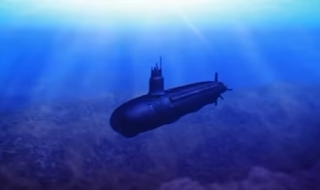FLOATATION
Ships,
canoes and ferry boats move on the upper part of the water bodies, we say they
float.it may happen that due to accident or over loading they sink. Example Titanic went to the bottom of North Atlantic
Ocean after hitting larger ice- berg.
A
balloon filled with lighter gas such as hydrogen will keep rising up when
released from the hand and a hot air balloon will keep rising as well with the
people in carriage once the air in balloon has been heated and expanded.
Therefore
floatation can be defined as the tendency of an object to rise up to the
upper levels of the fluid or to stay on the surface of the fluid.
The
opposite of floatation is sinking and can be defined as the tendency of an object to go to the
lower levels of the fluid.
MV.Liemba floats on lake Tanganyika
THE
LAW OF FLOATATION
The
law of floatation states that, a floating body displaces its own weight of
the fluid in which it floats.
This
means if a log of 200kg (2000N) floats in water displaces 200kg (2000N) of
water, if the same log is placed in other liquid and be able to float it will
displace the same 200kg of fluid in which it floats.
CONDITIONS FOR OBJECTS
TO FLOAT
I.
The
average density of the object should be less than the density of the fluid in
which the object has to float.
Example, a ship is very heavy but
it floats because it is hollow inside it contains air, this causes its average
density to be lower than that of water.
II.
The
upthrust force of the fluid on the object must be equal total weight of the object.(law of floatation)
Example, a coin will sink to the
bottom when placed on the surface of water, this is because the upthrust of
water on coin is less than its weight
III.
The
volume of object submerged must be large so as to displace large amount of
fluid.
RELATIONSHIP
BETWEEN UPTHRUST AND REAL WEIGHT OF FLOATING BODY
We
know that,
Real
weight = apparent weight + apparent loss in weight
Apparent
loss in weight = weight of fluid displaced = upthrust
Therefore,
Real
weight =apparent weight + upthrust
But
when an object floats its apparent weight is zero
Apparent
weight = 0
Then,
Real
weight = 0 + upthrust
Real
weight = upthrust.
Therefore
relationship between upthrust and real weight of floating object is such that upthrust
is equal to real weight, and since upthrust is equal to weight of fluid
displaced then floating body displaces its own weight of the fluid in which it
floats (law of floatation)
In
order an object to float its real weight must be equal to upthrust.
If
an object floats the volume of fluid displaced is equal to the volume of an
object submerged and the percentage of the volume of an object submerged is
equal to the relative density of an object with respect to the density of fluid
in which it floats.
Thus,
Example
An
ice cube of density 0.9g/cm3 floats in freshwater of density 1.0g/cm3
what fraction of volume of ice is submerged? If the same ice is floating in sea
water of the density 1.3g/cm³ what is the percentage volume of ice will be
submerged?
Solution
Percentage
volume of an object submerged in fresh water,
Percentage volume of an object submerged in sea water
APPLICATION OF LAW OF FLOATATION IN EVERY DAY LIFE
APPLICATION OF LAW OF FLOATATION IN EVERY DAY LIFE
In transportation by water ways
The law of floatation is applied in all
vessels which travel by waterways that include ships, submarines and ferry
boats.
In transportation by
air ways
It is also applied in
some vessels which travel by air ways such as hot air balloon and air ship.
In decoration
Balloons of different
colors and shapes are filled with lighter gas so that will float in air.
In measurement of
specific gravity of liquids
Hydrometer is an
instrument which is used to measure specific gravity of liquids, in its
operation it employs the law of floatation.
Other uses include
making of bulges and transportation of logs down the river.
Ships
Ship is like an iron
bowl floating in water, although iron is denser than water the bowl does not
sink. Being hollow it contains air causing its average density to be lower than
that of water.
Sand can be poured in
the bowl but it will keep floating, in excess mass of sand the bowl will sink,
in ship we call it overloading.
Ships are made of metals
such as steel or aluminium alloy which are denser than water, so to make it be
able to float it is hollow and filled with air making the average density lower
than density of water even when it is loaded with her cargo.
Ship travels in
different densities of water, sea water or fresh water, (hot or cold)
So by changing water ways
ship can displace more or less water in which it floats that means it may gain
or lose upthrust. If the upthrust becomes lower than its own weight the ship
sinks.
So for safety loading
of the ship under different sea conditions plimsol lines are provided.
Plimsol lines are
lines which show maximum height of the ship that should be under water.
Plimsol lines are also referred as plimsol marks.
Pic of marksxxxxxxxxxx
Submarine
Submarine is ship which can travel deep
under water and also at the surface of water, it owes its ability to dive and
come up to law of floatation.it contains ballast tanks at either sides which
are filled with water when it has to dive and are emptied when it has to come up. The tanks are filled
and emptied by special pumps.
Hot
air balloon
To watch animals at Serengeti helicopters
is noisy it would scare the animals,plane is faster it would pass without clear
vision but hot air balloon will do.
Hot air balloon consist of three parts,the
balloon,the burner and the basket.
The burner uses the propane gas to heat
up air in the balloon as the air in the
balloon gets hot it expands,its density becomes lower than the surrounding air
so it raises.
To get the balloon down the pilot can
open a parachute valve at the top of the balloon causing cold air to enter in
the balloon and decrease the temperature inside the balloon so the density,also
the pilot can let the air inside the balloon to cool itself by burning less
fuel.
Air ship
Air ship
uses lighter gas such as helium, hydrogen or hot air to rise up, and
maneuvering is done by means of propeller attached to it,example at cabin.
Balloons
Balloons
used for decoration are filled with lighter gas such as hydrogen or helium so
that they stay in the air,when filled by blowing air to them the can not rise
because the air we blew in them denser or equals to the density of air when it
is air itself(if not contaminated by exhaled air).
Pizxxxxxxxxxxxxxxxxxxxxxxx
Transportation of logs by the liver
Picxxxxxxx
Bulge
A bulge
is floating platform which can be used
for several activities for example recreational,transportation,research or
working platform,bridge etc.
Picxxxxxx bulge,,
The hydrometer








Good way of representation
ReplyDeleteThanks to teacher Kibiito ss S2M directed me here I HV gat something at least
ReplyDeleteThanks to my teacher Kibiito ss S2M 2019 who directed me here am Kulaisi Ricky Nash
ReplyDeletethank you my teacher
ReplyDeleteThank you so much
ReplyDeleteThank you so much
ReplyDeleteThanks a lot
ReplyDeletethank you teacher
ReplyDeletevery bad the answer I ask 12 they are giving only 5
ReplyDeleteA good presentation, thanks
ReplyDeleteWell done
ReplyDeletehelpful
ReplyDeleteVery vital information.
ReplyDeleteHanhanahanahannahahhn
DeleteIt very nice
ReplyDeleteGood explanation.
ReplyDeleteGood explaination
ReplyDeleteGood stuff
ReplyDeleteGreat only that more calculations need to be shared
ReplyDeletewhoa
ReplyDeleteThanks, the notes are well organized, clear and attractive
ReplyDeleteThanks I have an enjoyment of your notes
ReplyDeleteGood
ReplyDeleteDetailed explanation...nice.
ReplyDeleteDerivation for the law of floatation
ReplyDeleteThanks much sir
ReplyDeleteThanks.....you had cleared my doubts
ReplyDeleteI love this content
ReplyDeleteWell explained and presented.
THANKS!!!
Thanks much sir 🙏🙏🙏
ReplyDeleteI happy to educated
ReplyDeleteNyc
ReplyDeleteGood presentation. Makes it easy to be understood. Especially the fine diagrams and examples.
ReplyDeleteGood
ReplyDeleteFjk
ReplyDeleteI love this site it help me alot
ReplyDeleteI don't like this site
ReplyDeleteThank you so much you don't know how much helpful it is thanks ☺ 😊 🙏
ReplyDeleteVery Nice Site
ReplyDeleteThanks well explained
ReplyDeleteI like this so much let them be sending to our telegram or whatsWha
ReplyDeleteThis forum is very educational, I like it so much
ReplyDeleteFact
ReplyDeleteI have enjoyed your note well . thank you
ReplyDeleteA block of weight of mass 50kg and volume 0.032m³ floats in water, what is the volume of the wood above the surface of the water?
ReplyDeleteI need more example
ReplyDeleteThanks for the reminder.
ReplyDeleteWell done.
ReplyDeleteI need more example.
Thank my teacher i feel like having this class every minute
ReplyDeleteVery interesting
ReplyDeleteThanks teacher
Enter your comment...nice with good explanation
ReplyDeleteNice with good explanation.
ReplyDeleteThanks you so much I have injoy the note👏👏👏
ReplyDeleteI love the simple definitions
ReplyDeleteGod bless you sir may you live long 🙏☝️
ReplyDeleteThanks for sharing your Blog. Realy it is Very informative. If you want to buy Marine Safety equipment and Flotation Device so you visit our reputed Gear Ramp online store located in the United States. Our products are available at affordable prices. Contact us for more detail. email: info@gearramp.com & phone: 8007863307
ReplyDeleteMarine Safety
Boat Flotation Device
Marine Shore Power
Wireless boat navigation lights
Sciencethoughtz.com
ReplyDeleteThanks
ReplyDeleteGood
ReplyDeleteThanks a lot
ReplyDeleteI've not found any difference from the one my physics teacher taught me
Nice presentation
ReplyDeleteNicel
ReplyDeleteGood work sir
ReplyDeleteThanks
ReplyDeleteSir
Alkaline Water Dispenser
ReplyDeleteAlkaline Hot Water Purifier
Alkaline Undersink Water Purifier
Alkaline Water Purifier
Wow ! It's really so nice.
ReplyDeleteThank you so much sir!
And am highly seeking English notes o level especially paper 1(composition writing ) etc
Anyone with them, kindly help me 🙏🙏🙏
This site is very good and l wish l could use it always for may success in physics Inshallah
ReplyDelete